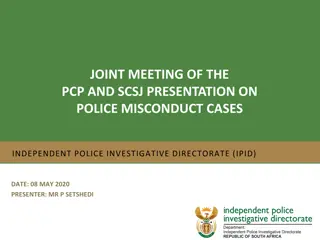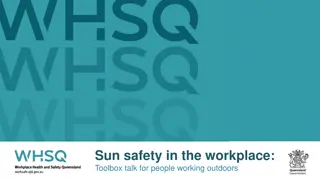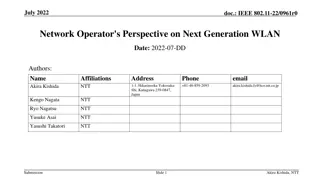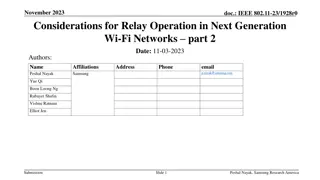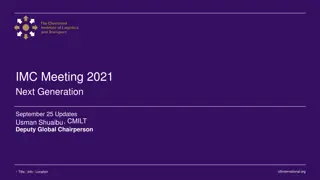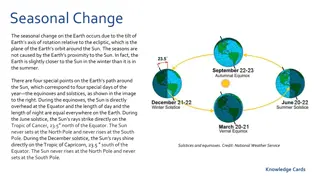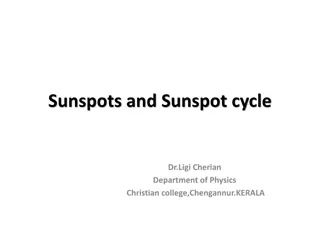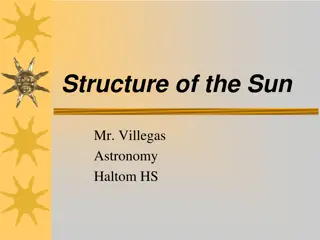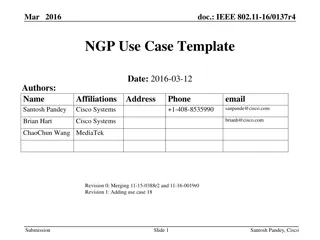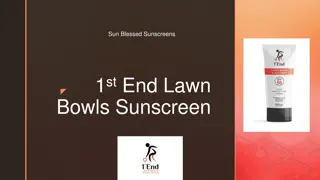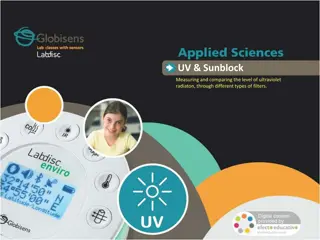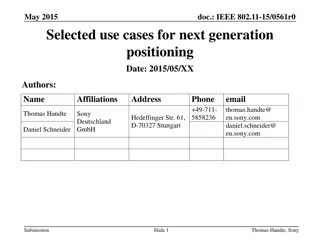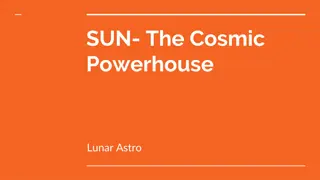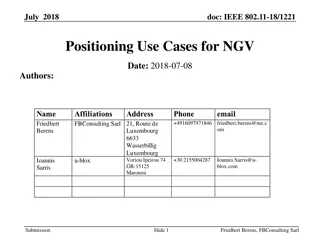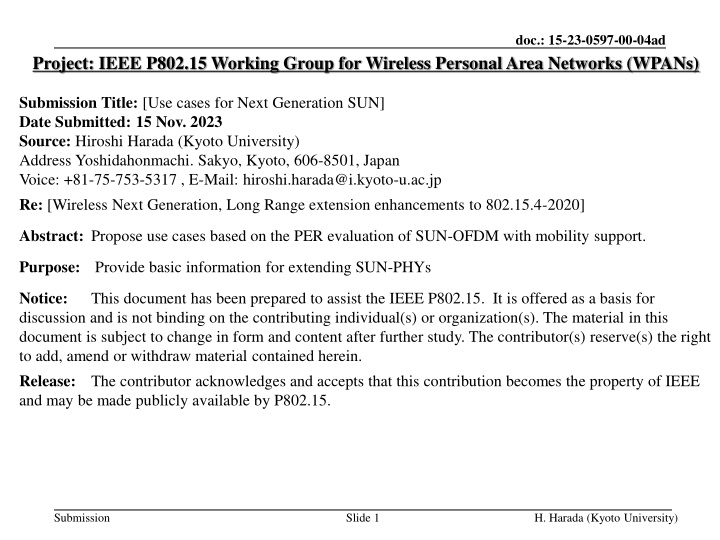
Next Generation SUN: Use Cases and IEEE 802.15.4 Applications
Explore the proposed use cases for Next Generation SUN based on PER evaluation of SUN-OFDM with mobility support. This document outlines expected applications and scenarios for IEEE 802.15.4 SUN, including short-range communications, data collection, urban and mobile communication, and more. Discover the potential advancements in wireless personal area networks (WPANs) and long-range extension enhancements to 802.15.4-2020.
Download Presentation

Please find below an Image/Link to download the presentation.
The content on the website is provided AS IS for your information and personal use only. It may not be sold, licensed, or shared on other websites without obtaining consent from the author. If you encounter any issues during the download, it is possible that the publisher has removed the file from their server.
You are allowed to download the files provided on this website for personal or commercial use, subject to the condition that they are used lawfully. All files are the property of their respective owners.
The content on the website is provided AS IS for your information and personal use only. It may not be sold, licensed, or shared on other websites without obtaining consent from the author.
E N D
Presentation Transcript
doc.: 15-23-0597-00-04ad Project: IEEE P802.15 Working Group for Wireless Personal Area Networks (WPANs) Submission Title: [Use cases for Next Generation SUN] Date Submitted: 15 Nov. 2023 Source: Hiroshi Harada (Kyoto University) Address Yoshidahonmachi. Sakyo, Kyoto, 606-8501, Japan Voice: +81-75-753-5317 , E-Mail: hiroshi.harada@i.kyoto-u.ac.jp Re: [Wireless Next Generation, Long Range extension enhancements to 802.15.4-2020] Abstract: Propose use cases based on the PER evaluation of SUN-OFDM with mobility support. Purpose: Provide basic information for extending SUN-PHYs Notice: discussion and is not binding on the contributing individual(s) or organization(s). The material in this document is subject to change in form and content after further study. The contributor(s) reserve(s) the right to add, amend or withdraw material contained herein. Release: The contributor acknowledges and accepts that this contribution becomes the property of IEEE and may be made publicly available by P802.15. This document has been prepared to assist the IEEE P802.15. It is offered as a basis for Submission Slide 1 H. Harada (Kyoto University)
Nov. 2023 doc.: 15-23-0597-00-04ad Use cases for Next Generation SUN Nov. 15, 2023 Hiroshi Harada, Ph.D. Submission Slide 2 H. Harada (Kyoto University)
Nov. 2023 doc.: 15-23-0597-00-04ad Expected use cases of IEEE 802.15.4 SUN (15-23-0390) Short range communications SUN Data collection base station (BS) SUN router SUN Wi-SUN radio device equipped sensor, meter and/or monitor (a) space communication Wide area open (c) Wide area mobile communication (b) Wide area urban area communication H. Harada, K. Mizutani, J. Fujiwara, K. Mochizuki, K. Obata, and R. Okumura, IEEE 802.15.4g based Wi-SUN Communication Systems, IEICE Transactions on Communications (Open Access), E100-B, No. 07, pp. 1032 1043, Jul. 2017. Submission Slide 3 H. Harada (Kyoto University)
Nov. 2023 doc.: 15-23-0597-00-04ad Expected use cases of IEEE 802.15.4 SUN (15-23-0390) Category (a) Wide area open space communication (b) Wide area urban area communication (c) Wide area mobile communication Applications Sensor, meter and/or monitor network for Energy management, Agriculture, disaster prevention, animal husbandry, and so on Information distribution, digital signage to building and store Sensing and monitoring for building and store (smart city) Sensing and monitoring from smartphone via SUN router Collection of sensing data from vehicles such as car and bus Control and management of vehicles Frequency , Typical data rate Sub-GHz bands (mainly 800-900 MHz bands), 50,100,150 kbps Transmission power AP 20 mW, 250 mW Terminal: 20 mW AP 20 mW, 250 mW Terminal, router: 20 mW AP 20 mW, 250 mW Terminal: 20 mW Antenna configuration AP TX: Compliant with regulation in each region AP RX: Multiple antennas. Diversity reception may be used. Terminal: Compliant with regulation in each region Antenna height > 4 m Coverage area 1 km-5 km 100 m-2 km 100 m-2 km Radio propagation Line-of-sight Non line-of-sight Non line-of sight Path-loss model Okumura-Hata model Walfisch-Ikegami model Walfisch-Ikegami model Fading model Multipath fading Multipath fading (e.g. GSM typical urban (TU) model) Terminal radio devices Fixed installation Basically fixed installation Installation in vehicle Vehicle speed: 40-80 km/h Multi-hop support May be needed to extend its coverage area and/or to keep high reliability. H. Harada, K. Mizutani, J. Fujiwara, K. Mochizuki, K. Obata, and R. Okumura, IEEE 802.15.4g based Wi-SUN Communication Systems, IEICE Transactions on Communications (Open Access), E100-B, No. 07, pp. 1032 1043, Jul. 2017. Submission Slide 4 H. Harada (Kyoto University)
Nov. 2023 doc.: 15-23-0597-00-04ad Main Parameters of IEEE 802.15.4 SUN-OFDM Parameters Option 1 1094 1200 128 Option 2 552 800 64 Option 3 281 400 32 Option 4 156 200 16 Nominal bandwidth (kHz) Channel spacing (kHz) DFT size Number of data-subcarriers Number of pilot-subcarriers Cyclic prefix length 96 48 24 12 8 4 2 2 1/4 (24 s) (Option, MCS)=(4,0) Need more distance BPSK (MCS 0-1), QPSK (MCS 2-4) 16QAM (MCS 5-6) Primary modulation scheme Convolutional code (Constraint length:7), Coding rate:1/2 (MCS 0-3,5), 3/4 (MCS 4,6) 4(MCS 0), 2(MCS 1-2), 1(MCS 3-6) 50 100 200 400 600 800 1200 Coding scheme and rate Spreading factor MCS 0 MCS 1 MCS 2 MCS 3 MCS 4 MCS 5 MCS 6 100 200 400 800 1200 1600 2400 25 50 100 200 300 400 600 12.5 25 50 100 150 200 300 Data rate for PSDU (kbps) K. Nakura, H. Masaki, H. Harada, Performance Evaluation of IEEE 802.15.4 SUN OFDM in VHF-bandfor Super-large Coverage Communication Systems , IEEE WF-IoT, Oct. 2023 (Option, MCS)=(1,6) Need more data rate (Option, MCS)=(3,x) Extension of current smart metering system Submission Slide 5 H. Harada (Kyoto University)
Nov. 2023 doc.: 15-23-0597-00-04ad Analysis of PER performance Simulation parameters Multipath Channel model Parameters Option, MCS Oversampling PSDU length Center frequency Decoding scheme Channel estimation Mobility support Interleaver Values (a) GSM typical urban model (1,6), (3, 3), (3, 4), (3, 5), (3, 6), (4,0) 16 samples 250 octets 175MHz Viterbi (Soft decision) Parameter Delay (?s) Path 1 0.2 Path 2 0 Path 3 0.3 Path 4 1.4 Path 5 2.1 Path 6 4.8 Relative power (dB) 3 0 2 6 8 10 LTF + pilot+[1],[2] ON GSM Typical Urban/ IEEE 802.22 profile A 0, 40, 80 km/h Tx: 1, Rx: 2 (MRC diversity) 10-1 Channel model (b) IEEE 802.22 profile A model Moving speed Antenna Required PER Parameter Path 1 Path 2 Path 3 Path 4 Path 5 Path 6 Delay (?s) 0 3.0 8.0 11 13 21 [1] S. Kadoi, H. Ochiai, R. Okumura, K. Mizutani, H. Harada, IEEE 802.15. 4g/4x-based Orthogonal Frequency Division Multiplexing Transmission Scheme for Wide Area and Mobile IoT Communication Systems , IEEE Internet of Things Journal, Dec. 2021 Relative power (dB) 0 -7 -15 -22 -24 -19 [2] K. Nakura, H. Masaki, H. Harada, Performance Evaluation of IEEE 802.15.4 SUN OFDM in VHF-band for Super-large Coverage Communication Systems , IEEE WF-IoT, Oct. 2023 Submission Slide 6 H. Harada (Kyoto University)
Nov. 2023 doc.: 15-23-0597-00-04ad PER performance 80 km/h 0 km/h 100 Option 4 MCS 0 Option 3 MCS 3 Option 3 MCS 4 Option 3 MCS 5 Option 3 MCS 6 Option 1 MCS 6 10 1 PER 10 2 0 5 10 15 20 25 30 35 5 SNR (dB) (a) GSM typical urban model (b) IEEE 802.22 profile A model K. Nakura, H. Masaki, H. Harada, Performance Evaluation of IEEE 802.15.4 SUN OFDM in VHF-band for Super-large Coverage Communication Systems , IEEE WF-IoT, Oct. 2023 Submission Slide 7 H. Harada (Kyoto University)
Nov. 2023 doc.: 15-23-0597-00-04ad Required SNR to achieve required PER Required SNR to achieve required PER=10-1 [dB] Vehicular speed (km/h) Parameters Data rate (kbps) 12.5 200 300 400 600 2400 12.5 200 300 400 600 2400 Chanel model Option, MCS 0 40 80 6.4 9.8 11.8 13.6 16.9 17.0 5.3 9.8 12.1 13.6 17.6 23.2 (4, 0) (3, 3) (3, 4) (3, 5) (3, 6) (1, 6) (4, 0) (3, 3) (3, 4) (3, 5) (3, 6) (1, 6) 3.9 9.6 11.8 13.7 17.1 17.4 3.6 10.0 12.4 14.0 18.0 24.8 6.9 10.2 12.1 13.7 17.1 17.2 5.6 10.2 12.4 14.0 17.8 23.6 GSM typical urban IEEE 802.22 profile A K. Nakura, H. Masaki, H. Harada, Performance Evaluation of IEEE 802.15.4 SUN OFDM in VHF-band for Super-large Coverage Communication Systems , IEEE WF-IoT, Oct. 2023 Submission Slide 8 H. Harada (Kyoto University)
Nov. 2023 doc.: 15-23-0597-00-04ad Transmission distance estimation By using the required PER, transmission range is calculated The calculation is based on super-wide area communication in VHF band Areas 1, 2, 3, and 4 are rural, suburban, small- and medium-sized cities, and metropolitan environments [1] The calculation is based on [2] Parameters Values Carrier Frequency 175 MHz Height 60 m BS TX power 37 dBm TX antenna gain 3 dB Height 1.1 m RX antenna gain 0 dB UE Noise figure 4 dB Temperature 300 K Okumura-Hata Model 5 dB Propagation model Fading margin [1] M. Hata, Empirical Fomula for Propagation Loss in Land Mobile Radio Services, IEEE Trans. on Vehicular Technology, vol. VT-29, no. 3, pp.317-325, Aug. 1980 [2] K. Nakura, H. Masaki, H. Harada, Performance Evaluation of IEEE 802.15.4 SUN OFDM in VHF-band for Super-large Coverage Communication Systems , IEEE WF-IoT, Oct. 2023 Submission Slide 9 H. Harada (Kyoto University)
Nov. 2023 doc.: 15-23-0597-00-04ad Transmission distance of SUN OFDM K. Nakura, H. Masaki, H. Harada, Performance Evaluation of IEEE 802.15.4 SUN OFDM in VHF- bandfor Super-large Coverage Communication Systems , IEEE WF-IoT, Oct. 2023 Vehicular speed= 0km/h Transmission distance [km] Area 2 32.3 17.7 15.2 13.3 10.5 7.4 33.0 17.2 14.5 13.0 9.9 4.4 Parameters Chanel model Option, MCS (4, 0) (3, 3) (3, 4) (3, 5) (3, 6) (1, 6) (4, 0) (3, 3) (3, 4) (3, 5) (3, 6) (1, 6) Data rate (kbps) 12.5 200 300 400 600 2400 12.5 200 300 400 600 2400 1 3 4 106.3 58.1 49.9 43.8 34.6 24.3 108.5 56.5 47.9 42.9 32.5 14.6 20.3 11.1 9.6 8.4 6.6 4.7 20.8 10.8 9.2 8.2 6.2 2.8 20.5 11.2 9.6 8.4 6.7 4.7 20.9 10.9 9.2 8.3 6.3 2.8 GSM typical urban IEEE 802.22 profile A Vehicular speed= 80 km/h Transmission distance [km] Area 2 26.2 16.9 14.9 13.3 10.4 7.5 28.7 16.9 14.5 13.0 10.0 4.8 Parameters Chanel model Option, MCS (4, 0) (3, 3) (3, 4) (3, 5) (3, 6) (1, 6) (4, 0) (3, 3) (3, 4) (3, 5) (3, 6) (1, 6) Data rate (kbps) 12.5 200 300 400 600 2400 12.5 200 300 400 600 2400 1 3 4 86.3 55.8 48.9 43.8 34.3 24.7 94.5 55.8 47.9 42.9 32.9 15.8 16.5 10.7 9.4 8.4 6.6 4.7 18. 10.7 9.2 8.2 6.3 3.0 16.6 10.8 9.4 8.4 6.6 4.8 18.2 10.7 9.2 8.3 6.3 3.1 GSM typical urban IEEE 802.22 profile A Submission Slide 10 H. Harada (Kyoto University)
Nov. 2023 doc.: 15-23-0597-00-04ad Update use cases Red: update part Category (a) Indoor communication (b) Wide area open space communication (c) Wide area urban area communication (d) Wide area mobile communication Applications Sensor, meter and/or monitor network for Industry, Medical environment, and so on Sensor, meter and/or monitor network for Energy management, Agriculture, disaster prevention, animal husbandry, and so on Information distribution, digital signage to building and store Sensing, surveillance, and monitoring for building and store (smart city) Sensing and monitoring from smartphone via Wi-SUN router Collection of sensing data from vehicles such as car and bus Control and management of vehicles Frequency , Typical data rate Sub-GHz bands (mainly 800-900 MHz bands), VHF (150-250 MHz) several kbps- several Mbps TX power AP several tens mW- several W Terminal: several tens mW Antenna configuration AP TX: Compliant with regulation in each region AP RX: Multiple antennas. Diversity reception may be used. Terminal: Compliant with regulation in each region Antenna height < 2m > 4 m Coverage area < several 10m 1 km-5 km 100 m-2 km 100 m-2 km Radio propagation Line-of-sight Line-of-sight Non line-of-sight Non line-of sight Path-loss model Need to propose Okumura-Hata model Walfisch-Ikegami model Walfisch-Ikegami model Fading model Multipath fading (maximum delay time :several 10 ns) Multipath fading (maximum delay time :several s) Multipath fading (maximum delay time :several 10 s) Terminal radio devices Fixed installation Fixed installation Fixed installation Vehicle speed: 4-40 km/h Installation in vehicle Vehicle speed: 40-80 km/h Multi-hop support May be needed to extend its coverage area and/or to keep high reliability. Submission Slide 11 H. Harada (Kyoto University)


